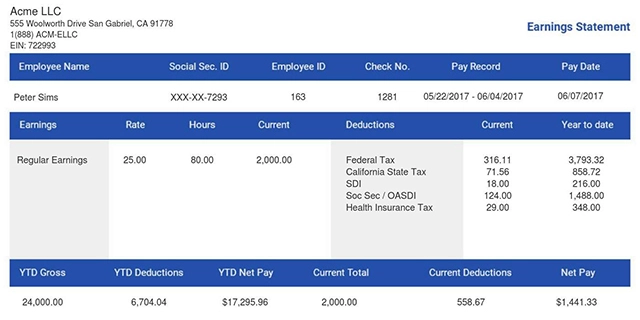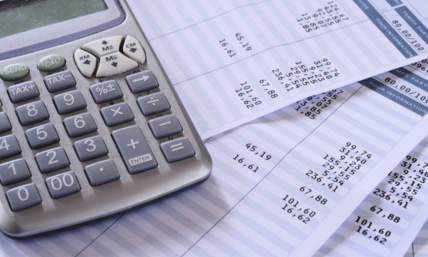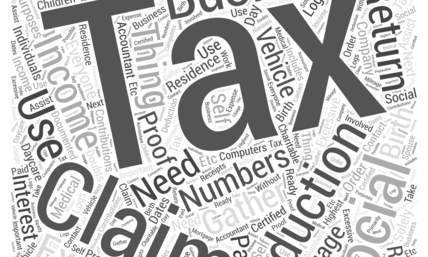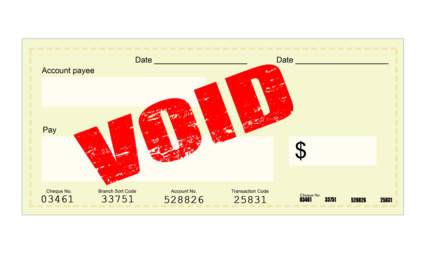Paystubs or Pay Stubs: Are They Different?
We know you're always happy when it's your payday. However, your pay, whether it's through direct deposit or a physical check, is the reward for your hard work. But have you ever wondered where some of your numbers are from, and where some of them go? That's where your paystub or pay stub, comes in.
You might be wondering if there's a difference between paystubs and pay stubs. The simple answer is no. Paystubs or pay stubs refer to the exact same thing, which is the detailed document that breaks down your earnings. You can think of it as a document that simply explains your paycheck.
This article explains this document. We'll walk you through what your pay stubs mean and what they're used for. If you're looking to create your document, you can one online using a pay stub creator with just a few easy steps.
Paystubs or Pay Stubs Meaning
Sometimes, you may see pay stubs being referred to as a pay slip or paycheck stub. It is simply a report of your earnings for a specific pay period. Think about the last two weeks or one month of work; that's your specific pay period.
The pay stub is a document your employer provides that lists exactly what you earned during that period and what has been taken out.
Note that your pay stub and paycheck are not the same thing. Your paycheck is the actual payment, which is your physical check. It is the cash or the digital deposit that lands in your bank account, and it only shows the final amount you're paid. On the other hand, your pay stub is the supporting document that shows and explains your earnings. This includes your gross earnings, all deductions for taxes and benefits, and net pay.
What's on Your Pay Stubs?
At first, your pay stub may just seem confusing because it has a lot of numbers on it. However, once you know what you're looking at, you'll understand your finances. Here's what is typically included on your pay stub:
1. Your Basic Information
This includes your name and address, as well as your employer's information. You'll also see the Employee Identification Number. This section simply confirms your identity.
2. Pay Period & Year to Date
This is your pay period section. It clearly lists the beginning and end dates for the current pay period for which you're being paid. It can be your pay for last week, the first half of the month, or the entire month.
Next to this, you'll find the year-to-date (YTD) column. It's your total earnings and deductions from January 1st to the most recent pay period. This helps in tracking your annual income when you're planning for the tax season.
3. Employee Earnings or Gross Wages
Your gross pay is often listed as gross wages or an employee's gross pay. It is your total earnings before anything is taken out. Gross pay is not the same as net pay. It represents the full amount you've earned.
This figure includes:
-
Your regular pay calculated from your hourly rate (for hourly employees) or a portion of your salary.
-
Any overtime pay you've accrued for hours worked beyond the standard limit.
-
Additional income, like bonuses or commissions.
In short, your employee's gross wages include all compensations before your deductions are subtracted.
4. Deductions
This is where you see your gross pay get reduced. These are your deductions, and they are usually:
-
Taxes: This is often the largest chunk. You'll see withholdings for federal income tax, state income tax, and sometimes local taxes. You'll also see FICA taxes, which fund Social Security and Medicare taxes. These tax withholdings are required by tax laws.
-
Benefits: These are typically voluntary tax deductions. This includes your share of health insurance premiums, employer contributions to retirement plans like a 401(k), and other elected benefits.
-
Garnishments: These are deductions that the court ordered you to pay. They include garnishments, such as for child support or unpaid debts.
5. Your Final Take-Home Pay or Net Pay
After your deductions have been subtracted from your gross pay, what you have left is your net pay. This is your take-home pay, which is the actual amount that gets deposited into your bank account. It is an income that you can spend. You can use it for your bills, savings, and personal expenses.
Why Are Pay Stubs Important?
Having accurate paystubs or pay stubs benefits both the employer and the employee. These are some of them:
For Employees
It can be used for:
-
Proof of Income: When you apply for a loan, rent an apartment, or finance a car, you need proof of income. Then, in this case, you need your pay stubs. Most landlords or lenders use pay stubs to verify your earnings. It’ll show that you're employed. If you need to provide this proof quickly, our 123 Paystub method lets you generate and download your paystub in just minutes.
-
Budgeting: Pay stubs show you exactly how much money you'll actually receive as net pay. This helps you when it's time for you to budget and plan your finances.
-
Help for Verification: Sometimes, mistakes can happen with your pay. This is also when pay stubs are useful, as they allow you to detect the mistake. You can verify that your pay rate and hours worked are correct. You'll also be able to spot any incorrect tax withholdings or other deductions before they become a bigger issue.
-
Tax Preparation: When it's time to file taxes, your pay stubs are extremely important. They help you anticipate your return or liability. It shows the income tax and other tax deductions already withheld throughout the year. This way, when the tax season comes, it becomes less stressful for you.
For Employers
For businesses, it's important to provide accurate pay stubs to employees. It helps in:
-
Legal Compliance: You can issue pay stubs to show compliance with wage and hour laws. An example is the Fair Labor Standards Act. Pay stubs help you show evidence that employees are being paid correctly, including for overtime.
-
Record-keeping: The law mandates employers to maintain accurate payroll records and employment tax records for a set number of years. Employers can use pay stubs when there's a tax audit or a regulatory review.
-
Resolving Disagreements: If a question arises about an employee's pay, the pay stub is the objective, neutral record that can quickly resolve the dispute. This can protect the relationship and the company.
Pay Stub Access: State Requirements
The regulations vary significantly. It depends on where your business operates and where you, as an employee, live.
At the federal level, the federal law, specifically the Fair Labor Standards Act, does not require employers to provide pay stubs. However, many states have their own rules regarding paystubs or pay stubs, and they are categorized into:
-
States That Require Access (Access/Print States): Many other states require employers to provide access to pay stubs. In these cases, employers can offer electronic pay stubs or an electronic pay statement to their employees. This access is mostly through an online portal. Employees can easily log in, view and download them. The states include:
-
Alaska
-
Arizona
-
Idaho
-
Illinois
-
Indiana
-
Kansas
-
Kentucky
-
Maryland
-
Michigan
-
Missouri
-
Montana
-
Nebraska
-
Nevada
-
New Hampshire
-
New Jersey
-
New York
-
North Dakota
-
Ohio
-
Oklahoma
-
Pennsylvania
-
Rhode Island
-
South Carolina
-
Utah
-
Virginia
-
West Virginia
-
Wisconsin
-
Wyoming
-
States With No Requirement: Some states do not have laws that require employers to provide pay stubs to employees. They include:
-
Alabama
-
Arkansas
-
Florida
-
Georgia
-
Louisiana
-
Mississippi
-
South Dakota
-
Tennessee
-
States That Require Physical Stubs: Some states require that employers provide printed pay stubs. In these states, employees must receive paper pay stubs or a physical pay stub attachment with their paycheck. They include:
-
California
-
Colorado
-
Connecticut
-
Iowa
-
Maine
-
Massachusetts
-
New Mexico
-
North Carolina
-
Texas
-
Vermont
-
Washington
For both businesses and employees, it is important to understand your specific state and local laws. In case you want to create your document, you can use a reliable paystub template. It ensures all the essential components are included correctly.
Pay Stub Best Practices

Here are some practices to help you access your pay stubs:
-
Know how to access it: Ensure you are familiar with how to access and retrieve your employee's pay stub. It can be accessed through a digital option, using a payroll app, your payroll department, or by requesting it from HR.
-
Review and verify: Make it a habit to always check your pay stubs when you receive them to ensure everything looks correct.
-
Store securely: If you receive a paper pay statement, keep it in a safe place. For digital stubs, save them in a password-protected folder. When it's time to dispose of them, shred physical copies and permanently delete digital files.
-
Keep your pay stubs: A good rule of thumb is to keep your pay stubs for at least one year. For tax purposes, you can even keep them for up to three years. Your employer, however, is required to keep payroll records for a longer period, typically three to four years.
Bottom Line
At the end, your pay stub means so much more. It clarifies your finances and makes it easier to understand what you earn and what you take home. While it helps employees, it also benefits employers. Therefore, make sure you check your documents regularly. Take a few moments with each pay period to look over your stub, understand the deductions, and know your rights.
Now that you know that your paystub or pay stubs are important to you, you need to know how to generate them. We offer the best pay stub generator to make it easy to create your own pay stubs. With us, you'd have an accurate and professional pay stub instantly. Get started with us now!















